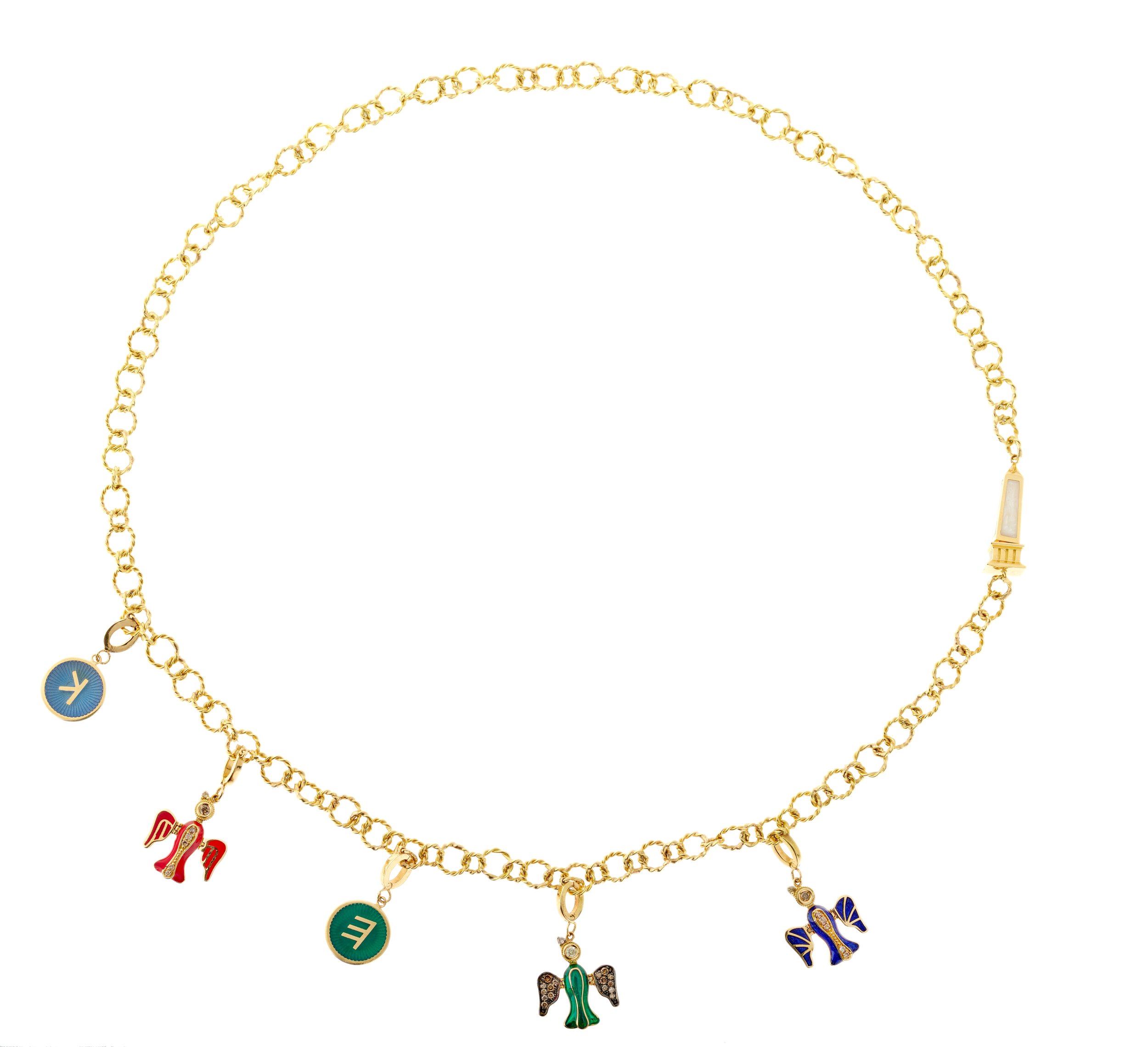Handcrafted in 18k gold and enamel, this necklace takes its form from the Roman obelisk, an adopted symbol of endurance, knowledge, and cultural grandeur. Once rising proudly in ancient cities, obelisks embodied the fusion of civilizations and the permanence of legacy. This piece is created for the woman who stands as her own monument—unshakable, radiant, and unforgettable.
Handcrafted in 18k gold and enamel, this necklace takes its form from the Roman obelisk, an adopted symbol of endurance, knowledge, and cultural grandeur. Once rising proudly in ancient cities, obelisks embodied the fusion of civilizations and the permanence of legacy. This piece is created for the woman who stands as her own monument—unshakable, radiant, and unforgettable.





